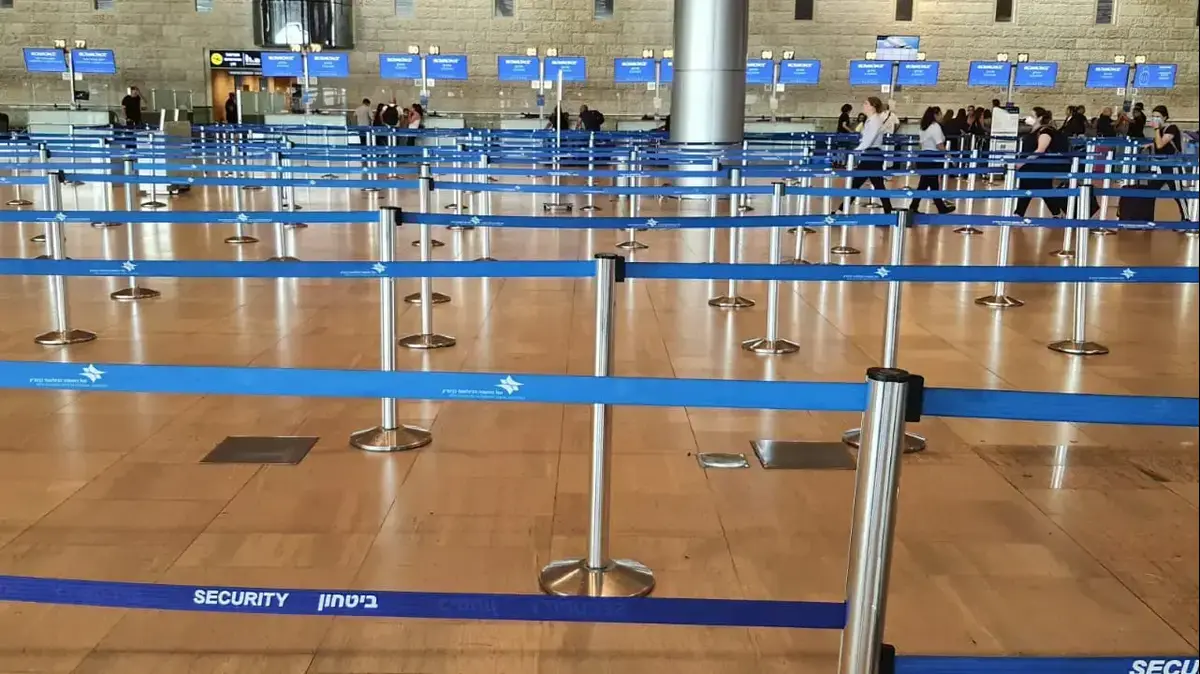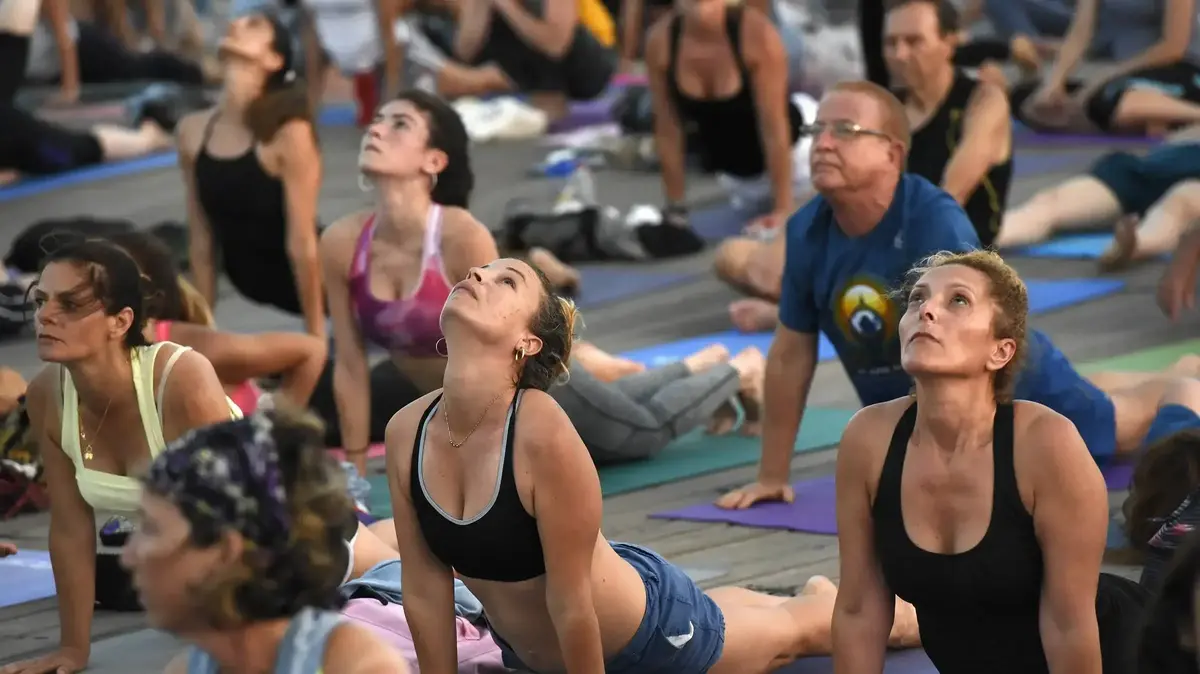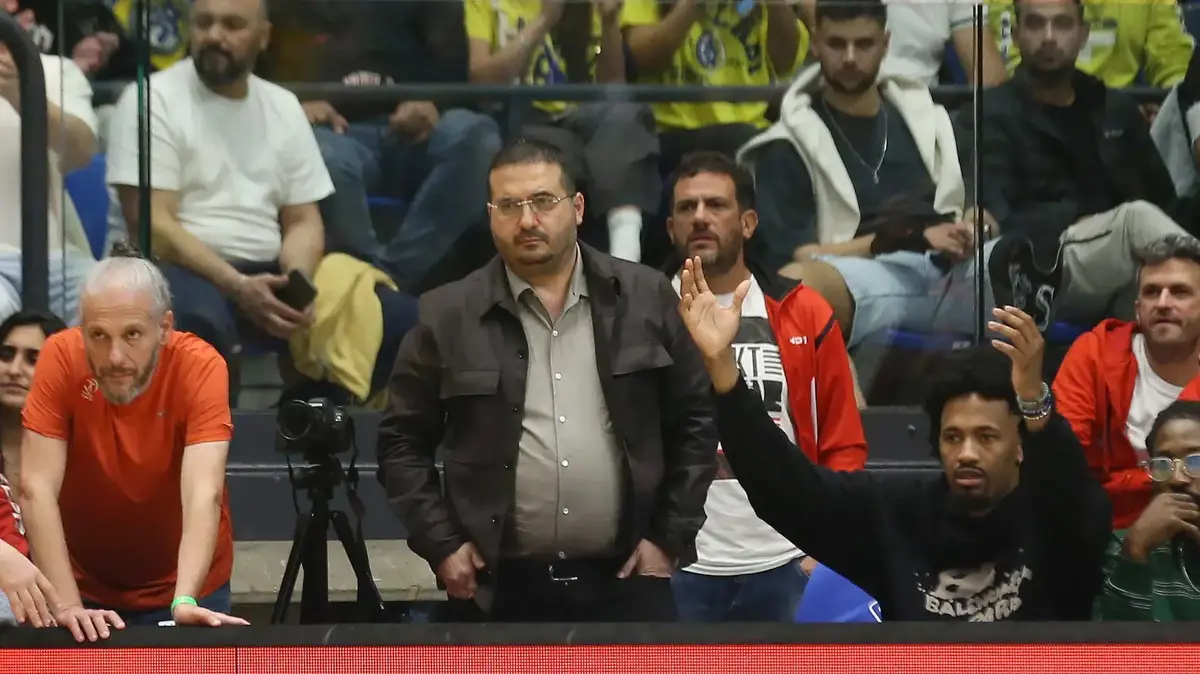Two raindrops and one broken traffic light
turned this week's most expensive city in the world into a large parking lot.
Food couriers ranged from a variety of company vehicles, luxury and cheap that got stuck for hours.
Two more drops and sinkholes opened up on the streets of the first Hebrew city.
The writing was on the wall, but graffiti artists covered it with street art, and billboards hid it from everyone. As the occupants of the traffic jams between Gedera and Hadera know, something is completely stuck in the Israeli reality. This is how it is when based on promises from 4,000 years ago, locations from 2,000 years ago, and a variety of aspirations for contracts and hallucinations to engineer and organize the space of the country. When road planning is based on miracles, and skyscrapers are built using advanced engineering techniques of "it will be okay," it is no wonder that the startup nation is panicking every time a rain cloud approaches our shores.
The central area is like a pleasure boat whose entire decks are full above and beyond, its streets sooty, its beggars multiply, and a chassis collapses under the weight of the towers. It is clear to everyone that the ship is full to capacity, and it is only a matter of time before it can move forward. The northern area is crowded and a bit remote, and only the south remains as a space that is still mostly empty and can populate Israel's future population. The question of which Negev will grow here in the coming decades is in fact the question of the Israeli future.
This week, residents of Be'er Sheva and the south were informed of the approval of the Be'er Sheva 2030 outline plan.
Yes, I too had to check again that this was not a mistake.
Think about how many things have changed since then and understand how important this program is to the city.
The plan sets out the planning infrastructure for the development of the city as the main focus of employment, education, health, culture and leisure, and a declaration of "commitment to environmental sustainability and the surrounding natural resources."
Then comes the bomb.
The plan assumes a particularly optimistic population scenario and plans ahead to double (!) The population of Be'er Sheva to 401,000 people.
At this point, if you turn a deaf ear and listen carefully, you will hear the pockets of investors rejoicing, the mobile phones of the realtors vibrating with excitement, and the foreheads of the people of Be'er Sheva wrinkling in bewilderment - to double the city?
really?
And as my little daughter summed it up well: "Dad, I love Tel Aviv, but I do not want her to come and live in Be'er Sheva."
And this is the essence of the urban challenge that is about to develop the city's leaders and residents - how to grow, without becoming an urban monster of investors and sinkers.
The last twenty-five years have changed Be'er Sheva. From the city in the desert beyond the mountains of darkness, it has become a success story full of local pride and action that has created a place. A coalition of politicians, economic and cultural entrepreneurs, most of them city dwellers, have created a city with a variety of opportunities and possibilities as there is in a big city, but in a small one. True, there are only three or four patisseries, but excellent, and what do you need 300 cafes for when you can only sit in one at a given time? This is how the city grew and managed to preserve many of the benefits of a small town. Proximity, transportation convenience, and most importantly a more relaxed sense of life.
The first innovation
of the Beer Sheva 2030 plan is in the direction of development. In the past, urban development increased the city in detached neighborhoods, and a man under his vine and fig tree to a two-family neighbor. Thus, the land resource around the city was used for more and more neighborhoods that stretched and diluted the urban space like chewing gum, perforating and crumbling it. Be'er Sheva 2030 aligns with the most innovative trends in the world, and the great news for the city's residents is that the trend is reversed. Forget about new villa neighborhoods, the trend is to develop Be'er Sheva inside. The concentration of urban renewal is into the old neighborhoods, and into the old city. And in the process, the second good news that the plan brings to the city's residents - the merging of the disconnects between the various neighborhoods will finally begin. Disconnections that left the hallucinatory past planning of city planners who did not live in the city one day, but used the city as a playground and experiments in concrete and humans.
Be'er Shevaim know very well what I'm talking about. The city was designed as a semicircle around the urban center in the south, and the large neighborhoods were built far from it and one from the other. Why? Because to someone in Tel Aviv it seems cool to establish a garden city in the desert. This created an absurd situation in which the neighborhoods were closed units, and any matter beyond the neighborhood grocery store or jade required a walk or a long drive. Over the years, the large malls on the outskirts of the city have sprung up to fill the vacant space, further undermining the plethora of small, local businesses that have almost completely faded. And so the Beersheba urbanity became car-dependent.
Be'er Sheva 2030 brings with it a line of returning the "neighborhood" to its glory as a community body.
The transformation of the neighborhoods in the process of evacuating construction and changing the NAP, into tower neighborhoods that involve housing and business - will return the neighborhood to be the center of residents' lives.
The empty spaces in between, which characterized the main city avenues, the plan designates to become continuous avenues of recreation and leisure.
Here, too, is the third gospel: after fifty years, there is a clear and serious reference to a matter which to this day has been understood by every girl and boy, and for some reason sublime in the mind of the city planners for whom the sun shone where they do not sit.
The creation of large urban boulevards in Israel depends solely on the presence of one thing - shade.
Also in transportation, the program aligns with the trends in the world and creates areas without vehicle entry, widening bicycle paths and small means of transportation throughout the entire city.
At the same time strengthening public transport, since the truth is that even the smartest Tesla are stuck like mourning in traffic jams.
The big challenge of the program
is the question of expanding the population in the city. Here it is worth contacting Interior Minister Ayelet Shaked, a fan of the admissions committees, and asking to establish an admissions committee for the city. If small localities are allowed, why not Beer Sheva? And to all those who will say that they are "dreaming and sick of Tel Aviv" but it is "too expensive," that they will move to Petah Tikva. Those who come to the well will begin to get used to drinking from it, and live like Beer Shevaim. And yes, there is such a thing, the character of Beersheba, and the character of the south, and if you want to know what it is, do not discover America, discover Beersheba - just integrate, do not lead.
But so much good without evil - impossible. And on the Beer Sheva 2030 plan obscuring a particularly bad shadow. The members of the Southern District Committee, who approved the plan, decided for some reason that they would also be the body that determines how to carry it out, and not the Be'er Sheva municipality. This is a unique directive that has not been introduced to date in any outline plan of another authority. Why? For the secret officers - the solutions. But in the absence of an explanation to the public, we can only suspect that this directive exudes an old and rotten smell of patronage, and to the attention of Minister Shaked - this is an act that is in stark contrast to the declared policy of the government and Interior Ministry to expand and grow local government powers.
Beersheba and Southerners alike should be furious and wonder why a committee of officials not elected by the public will function as the "municipality" of the elected municipality.
If in a few more years you sit in traffic jams of blocked roads for no reason and no work and wonder why this is happening, the answer is here.
I hope the municipality will appeal the strange decision and the hearing will move to higher courts.
After decades in which our southern lives have been run as a series of experiments by delusional planners, we have no need for new system masters.
We are able to manage our urban life ourselves very well.
Were we wrong?
Fixed!
If you found an error in the article, we'll be happy for you to share it with us








